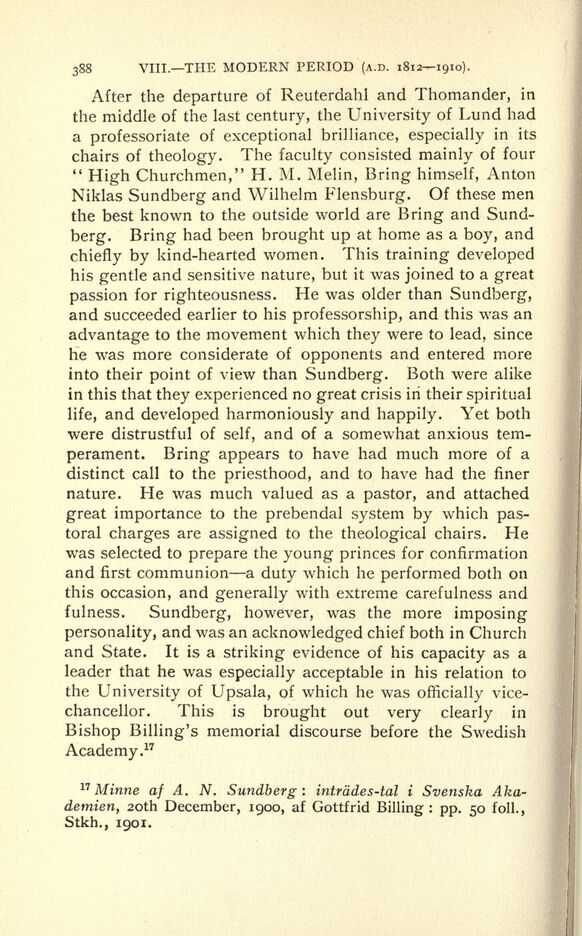
Full resolution (JPEG) - On this page / på denna sida - VIII. The Church in the last century (1811—1910 A.D.)

<< prev. page << föreg. sida << >> nästa sida >> next page >>
Below is the raw OCR text
from the above scanned image.
Do you see an error? Proofread the page now!
Här nedan syns maskintolkade texten från faksimilbilden ovan.
Ser du något fel? Korrekturläs sidan nu!
This page has never been proofread. / Denna sida har aldrig korrekturlästs.
388 VIII. THE MODERN PERIOD (A.D. 18121910).
After the departure of Reuterdahl and Thomander, in
the middle of the last century, the University of Lund had
a professoriate of exceptional brilliance, especially in its
chairs of theology. The faculty consisted mainly of four
"
High Churchmen," H. M. Melin, Bring himself, Anton
Niklas Sundberg and Wilhelm Flensburg. Of these men
the best known to the outside world are Bring and Sund
berg. Bring had been brought up at home as a boy, and
chiefly by kind-hearted women. This training developed
his gentle and sensitive nature, but it was joined to a great
passion for righteousness. He was older than Sundberg,
and succeeded earlier to his professorship, and this was an
advantage to the movement which they were to lead, since
he was more considerate of opponents and entered more
into their point of view than Sundberg. Both were alike
in this that they experienced no great crisis in their spiritual
life, and developed harmoniously and happily. Yet both
were distrustful of self, and of a somewhat anxious tem
perament. Bring appears to have had much more of a
distinct call to the priesthood, and to have had the finer
nature. He was much valued as a pastor, and attached
great importance to the prebendal system by which pas
toral charges are assigned to the theological chairs. He
was selected to prepare the young princes for confirmation
and first communion a duty which he performed both on
this occasion, and generally with extreme carefulness and
fulness. Sundberg, however, was the more imposing
personality, and was an acknowledged chief both in Church
and State. It is a striking evidence of his capacity as a
leader that he was especially acceptable in his relation to
the University of Upsala, of which he was officially vice-
chancellor. This is brought out very clearly in
Bishop Billing s memorial discourse before the Swedish
Academy.
17
17
Minne af A. N. Sundberg: intrades-tal i Svenska Aka-
demien, 2oth December, 1900, af Gottfrid Billing :
pp. 50 foil.,
Stkh., 1901.
<< prev. page << föreg. sida << >> nästa sida >> next page >>